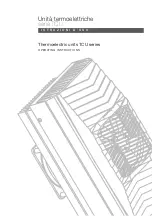
11. Commissioning
MiR1000 Shelf Lift User Guide (en) 12/2020 - v.2.1 ©Copyright 2019-2020: Mobile Industrial Robots A/S.
109
11. Commissioning
This section describes how to commission MiR1000 Shelf Lift.
Commissioning should be done without any load on the robot, except when doing brake tests
where the robot should have a load equaling the heaviest load it will be driving with.
Only persons assigned with the commissioning task should be present during commissioning.
It is the responsibility of the commissioner to:
•
Analyze the work environment.
•
Make a risk assessment of the full installation.
•
Procure shelves with specifications supported by MiR.
•
Create and configure the site.
•
Configure audio and light signals according to the environment.
•
Change the robot's footprint or create new footprints depending on the top module or
loads of the robot.
•
Create operating hazard zones.
•
Make a brake test.
•
Create user groups and users.
•
Create dashboards.
•
Update robot software.
•
Change the relevant system settings.
11.1 Analysis of the work environment
The work environment of the robot must fulfill a number of requirements for the robot to
function properly and safely. This section describes the factors that must be considered when
the robot is being commissioned to function in a work environment.
Surfaces
The floor surface of the work environment must be dry. MiR1000 Shelf Lift functions on
many different types of surfaces, but some materials can affect the performance and safety
of the robot, such as very thick carpets or slippery floors.
It is the responsibility of the commissioner to test the performance and safety of the robot
on the surfaces in the work environment—see
Making a brake test on page 149
.
















































